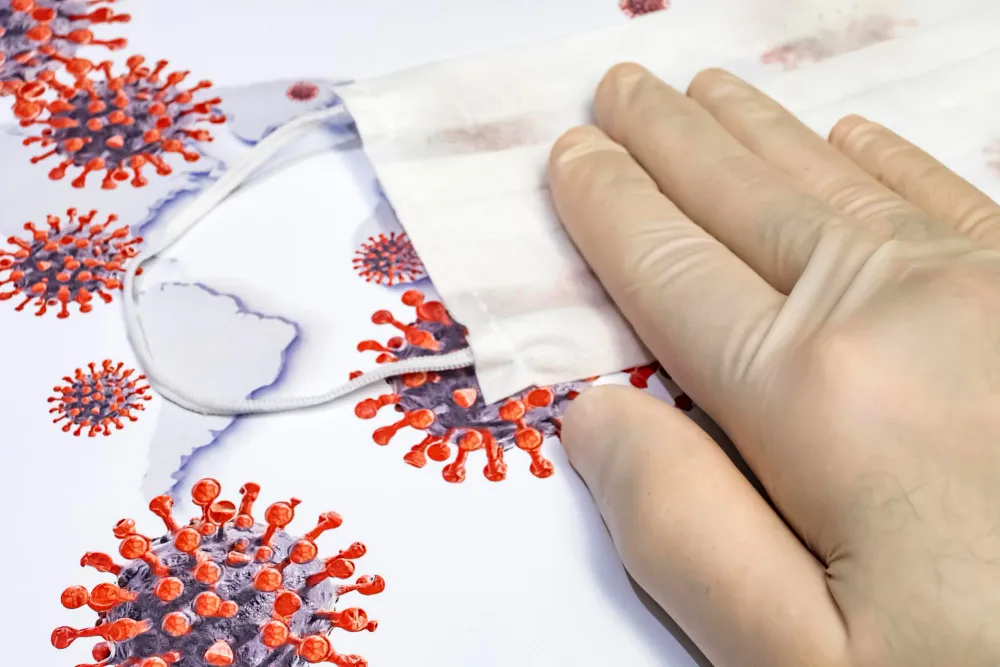
Infectious Diseases
Infectious Diseases | Definition, Common Types, and How to Deal with Them
Infectious diseases are medical conditions caused by the entry of microorganisms such as bacteria, viruses, fungi, or parasites into the human body. These microorganisms can be transmitted from one person to another through various means, including air, water, food, or direct contact.
Infectious diseases are considered one of the major global health challenges, having caused numerous pandemics throughout history. In this article, we explore the most common types of infectious diseases, how to deal with them, and ways to prevent their spread.
What Are the Most Common Types of Infectious Diseases?
- Influenza:
Influenza is a viral infection that affects the respiratory system. It spreads through droplets released during coughing or sneezing and causes symptoms such as fever, cough, muscle pain, and fatigue. It is especially common in winter and can lead to serious complications in children and the elderly. - Viral Hepatitis:
Viral hepatitis refers to a group of diseases that affect the liver. The most common types are A, B, and C. Hepatitis A is transmitted through contaminated food or water, while hepatitis B and C are transmitted through blood or sexual contact. - HIV (AIDS):
Human Immunodeficiency Virus attacks the immune system, making the body more vulnerable to infections and diseases. It spreads through blood, unprotected sexual intercourse, and from mother to child during childbirth or breastfeeding. - Malaria:
Malaria is a parasitic disease transmitted through the bites of infected mosquitoes. It affects red blood cells and causes fever, chills, and headaches. It is prevalent in tropical and subtropical regions. - Tuberculosis (TB):
TB is a bacterial infection that mainly affects the lungs but can also impact other organs. It is transmitted through the air when an infected person coughs or sneezes and is more common in overcrowded and poor living conditions.
6 Main Ways Infectious Diseases Are Transmitted
- Direct contact: Such as shaking hands, kissing, or any direct physical interaction with an infected person.
- Indirect contact: Through touching contaminated surfaces or objects.
- Respiratory droplets: Spread by coughing or sneezing.
- Contaminated food or water: A common cause of food poisoning or waterborne diseases.
- Insect bites: For example, malaria spread by mosquitoes.
- Blood or bodily fluids: Such as HIV transmission through blood.
5 Common Symptoms Shared by Infectious Diseases
While each infectious disease has its unique symptoms, many share general signs such as:
- Fever
- Diarrhea
- Cough
- Muscle aches
- Fatigue
How to Deal with Infectious Diseases
1. Prevention
- Vaccination: One of the most effective preventive measures, reducing the risk of diseases like measles, polio, and flu.
- Personal hygiene: Regular handwashing, especially before meals and after using the restroom, minimizes the risk of infection.
- Avoid crowded places: Especially during disease outbreaks.
- Use of personal protective equipment: Such as masks and gloves in high-risk areas.
2. Early Diagnosis
Early detection improves treatment outcomes and limits disease spread. This can be achieved by:
- Regular health screenings
- Recognizing early symptoms
- Seeking medical advice when needed
3. Treatment
- Antibiotics: Used for bacterial infections, but must be taken with caution to avoid antibiotic resistance.
- Antiviral medications: For viral diseases like influenza and HIV.
- Antiparasitic drugs: Used for diseases like malaria.
- Supportive care: Such as IV fluids to prevent dehydration and fever-reducing medications.
4. Dealing with Epidemics
- Public awareness: Disseminating accurate information about prevention and treatment.
- Strengthening health systems: Ensuring access to healthcare services.
- International coordination: As seen during the COVID-19 pandemic, global organizations played a vital role in controlling disease spread.
What Are the Major Challenges in Combating Infectious Diseases?
Despite medical advancements, infectious diseases continue to pose significant challenges, such as:
- Antibiotic resistance: Due to overuse and misuse of antibiotics.
- Genetic mutations in pathogens: Making them harder to control.
- Emerging diseases: Like COVID-19, which require rapid and effective responses.
- Environmental factors: Such as climate change that promotes disease spread in new regions.
The Role of Society and Individuals in Fighting Infectious Diseases
The community plays a crucial role in combating infectious diseases through:
- Education: Raising awareness about prevention and the importance of vaccination.
- Solidarity: Supporting vulnerable groups such as the elderly and those with chronic illnesses.
- Scientific research: Investing in the development of new treatments and vaccines.
Conclusion
Infectious diseases remain a global health concern that requires collective action at all levels. Through prevention, early diagnosis, and effective treatment, the impact of these diseases on individuals and societies can be significantly reduced. Moreover, investing in scientific research and strengthening health systems is essential for facing future challenges and ensuring better health for all.
Sources
Also Read More:
Polycystic ovary syndrome | HIV | AIDS | Support for people with addiction disorders | 5 Reasons to Consider Family Planning | The Importance and Benefits of Family Planning | Nutrition for People Living with HIV | AIDS | Sexually transmitted infections | Harm Reduction | Combating AIDS | Urinary Tract Infection (UTI)


